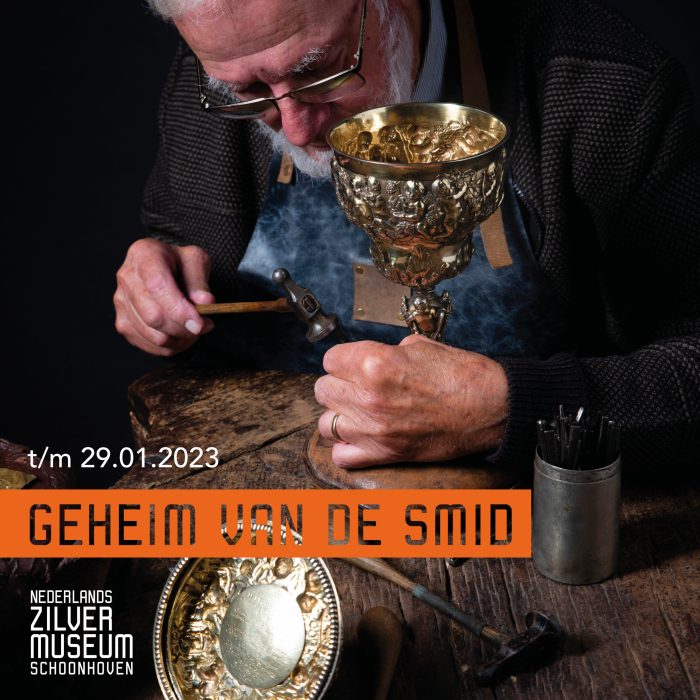Discover the techniques
Secret of the smith
How does a silver smith or a gold smith create certain objects? Even present-day experts still wonder how some objects are made. In this exposition we take you behind the scenes to discover how some of the objects are actually made. During this exhibition you experience how the trade of the silver smith has evolved in the past centuries.
Ancient techniques
Willem van Laer, from Zwolle, was one of the first smiths to actually take notes of his techniques and trade secrets. He published his work in 1721. Before that, knowledge was only passed down from generation to generation or from master to student. Nowadays, the Dutch college of silversmithing teaches students some of the ancient techniques.

Goblet of the Hoogheemraadschap of Schieland,
Hans Coenraat Brechtel, Johannes van der Maa, John Dutens, 1657, 1659, 1732.
Photography: Carla Leijen
From graduation to artist Every student of the college learns some of the most bosic techniques, like sawing, drilling and soldering. You can see how experience a smith is by looking at his hands. It takes a lot of skill to saw straight and not into your finger. A smith learns from experience. This shows in the exhibition. For example, we exhibit a special graduation piece made by Gustav Beran. He created his jewelry box in 1933 in Vienna. In 1938, he designed an object for Gerritsen and Van Kempen: the famous Oranjebeker. This extraordinary object was made to celebrate the birth of princess Beatrix and was decorated with email.
The art of hammering
How your final creation looks, depends on the tools you use. Silversmiths are different from goldsmiths because of the hammering. Many smiths pass down their hammers or give them to another smith. Hammering techniques, like embossing and conducting, have been around for centuries. For example, look at this goblet of the Hoogheemraadschap of Schieland (1657). This goblet was made by silversmith Hans Coenraat Brechtel. A perfect example of conducting is this frog bowl, made by Gerard Bakker. The bowl was created out of one single piece of silver.
New inventions
Through time, many new techniques have been developed. Like galvanising for example. The smith made the silver ‘grow’ onto the surface by conducting electricity. This innovation was so revolutianary that objects made with this technique were exhbited at the World Exhibition in Paris. Some of the oldest and newest objects created with this technique can be ssee in the museum: Tafelstuk 1863 (Voorschoten, Van Kempen and Begeer) and Treasure of New Life (Jan Matthesius, 2014). More recent techniques will also be discussed, like 3D printing for example. Will you help us purchasing Treasure of New Life? Discover more about this piece!
Activities
Watch the smith at work in the Forge and ask them all of your questions. Meet Cor Kuijf for example, expert in filigrain. And of course, adults and children can try being a silver smith themselves in the Workplace.

